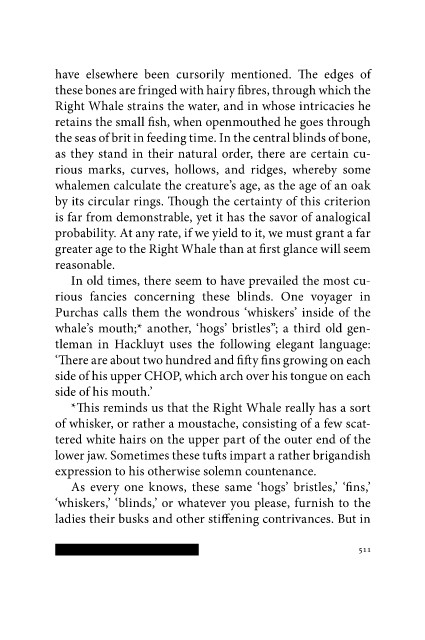Page 512 - moby-dick
P. 512
have elsewhere been cursorily mentioned. The edges of
these bones are fringed with hairy fibres, through which the
Right Whale strains the water, and in whose intricacies he
retains the small fish, when openmouthed he goes through
the seas of brit in feeding time. In the central blinds of bone,
as they stand in their natural order, there are certain cu-
rious marks, curves, hollows, and ridges, whereby some
whalemen calculate the creature’s age, as the age of an oak
by its circular rings. Though the certainty of this criterion
is far from demonstrable, yet it has the savor of analogical
probability. At any rate, if we yield to it, we must grant a far
greater age to the Right Whale than at first glance will seem
reasonable.
In old times, there seem to have prevailed the most cu-
rious fancies concerning these blinds. One voyager in
Purchas calls them the wondrous ‘whiskers’ inside of the
whale’s mouth;* another, ‘hogs’ bristles”; a third old gen-
tleman in Hackluyt uses the following elegant language:
‘There are about two hundred and fifty fins growing on each
side of his upper CHOP, which arch over his tongue on each
side of his mouth.’
*This reminds us that the Right Whale really has a sort
of whisker, or rather a moustache, consisting of a few scat-
tered white hairs on the upper part of the outer end of the
lower jaw. Sometimes these tufts impart a rather brigandish
expression to his otherwise solemn countenance.
As every one knows, these same ‘hogs’ bristles,’ ‘fins,’
‘whiskers,’ ‘blinds,’ or whatever you please, furnish to the
ladies their busks and other stiffening contrivances. But in
11

